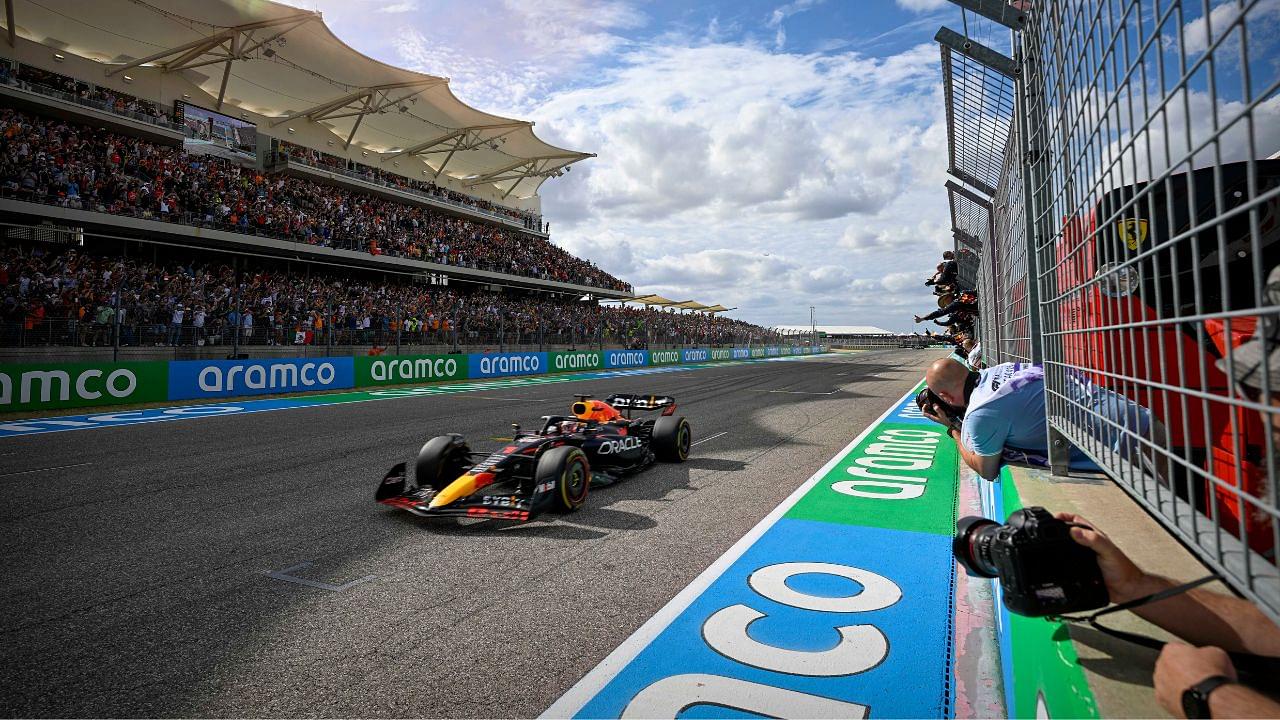Formula 1 Cars are probably the most advanced cars running on the planet. With the top speed ranging to 218 mph, some of the top engineering work goes behind making one of the best F1 cars of the year.
Like road cars, F1 cars also use combustion engines. However, the latter’s power unit is stronger than any running car worldwide. Apart from gaining high speeds, the functions of F1 cars are very intricate.
The car must go through multiple corners, so the driver has to take his car through various speed ranges. Hence, like any car, the concept of gears comes in.
Also read: Max Verstappen Refuses to Treat Neck Pain Because His Father Says It’s for ‘Cry Babies’
How Many Gears Does a Formula 1 Car Have?
The F1 cars over the years have only become more complicated. Every fundamental concept has only been developed through the 73 years of the sport. And so did the gearbox.
Under the current regulations, since 2014, Formula 1 cars have eight forward gears and one mandatory reverse gear. The new mandate has pushed for an increase of one gear; before that, the cars used to have only seven gears.
Surely, the new generation cars are faster, and to achieve over-the-limit speed, they need to have more gears in the car. With the new engine regulations stepping in 2026, it remains to be seen whether there will be any modification in gearboxes like last time.
Do F1 drivers shift gears manually?
For over 30 years, F1 drivers have left manually changing gears. Instead, nowadays, they are semi-automatic and are changed by a computer. Though, drivers are needed to select the gears by using the paddles behind the steering wheel these days.
So technically, drivers don’t have to shift the gears manually with a stick like the drivers from the vintage era used to do. But still, they have a tricky job with the gear and have to be quick in reflexes to have the gears in the right mode to optimize the performance.
Many F1 drivers are used to most of the tracks across the season. Even if they go to a new circuit, they train well on the simulator to identify the track. That’s how they know where to run their car in what gear.
Also read: Ex-driver Surprised Lando Norris Signed a Long Term Deal With McLaren
What is a gearbox, and how expensive are they?
All F1 teams use the same gearbox, which got introduced in 2014. Usually, it’s bolted behind the car engine and is used to shift the gears with the gear control unit embedded in it.
Gearboxes are one of the most intricate parts of the car to build. That’s why they are one of the most expensive pieces of equipment in an F1 car. According to F1Chronicle, a gearbox costs around $600,000.
That’s why they are one of the most preserved things on the grids, and it’s a huge setback when one of them gets damaged because of a major crash by a driver.
Moreover, if they get damaged a few hours ago, or even a day before the race, teams have a hectic job to fix things. They are sometimes forced to retire their car due to gearbox issues. So that’s why they are important but fragile.
How many gearboxes does a driver have in a year?
According to the current rules, FIA only approves four gearboxes in a year. If the teams like to use more than that limit, the drivers will have to serve a penalty.
That’s why the car equipements is required to be preserved to see the final end of the season without serving a significant penalty that can eventually harm a race and the season’s objectives.
Ferrari gearbox at the #AustrianGP #F1 #TechF1 pic.twitter.com/ysf14YzkWh
— nicolas carpentiers (@NicolasF1i) July 9, 2022
Yet, the faster teams manage to make exceptions and use the best possible resources to run on the grid. As for them, starting from behind could be no problem if they have upgraded resources. Like in the case of engines, teams risk taking penalties for engines as it can enhance their chances of winning races with more power.
But teams don’t risk taking gearbox penalties as it doesn’t directly correlate with a car producing more power. It’s only out of necessity if a team has to go with a fifth gearbox.
Also read: How Fernando Alonso Inspired a $1 Million Timepiece By Richard Mille




